Lying on a trolley in a hospital corridor, Emily Colyer closed her eyes in despair. Recently diagnosed with a brain tumour, she had been rushed to the Royal Blackburn Hospital after collapsing at work and suffering fits. By the time I encountered her, she’d already spent 20 hours in A&E waiting for a hospital bed.
Emily was awaiting for further diagnosis, and hoping to soon have surgery to remove the growth. “Once you know there is something alien in you, you want it out,” she said. We met when she was eventually transferred from a trolley to a bed – bed number 4.
But when she was finally moved, Emily wasn’t angry about the delay. Like many people flowing through the hospital, she wore the strain with resignation and stoic acceptance. Keen to protect the staff and the system treating her, she was quick to offer explanations – “it was just extremely busy in A&E, every corridor was rammed, but the NHS staff were trying their best.” In fact, she counted herself lucky. “Other patients were being told it would be seven hours before they’d even be seen,” she said.
Emily’s experience is not unique. Around six people moved through the bed in a week, and their cases displayed the major challenges facing the NHS in 2019 – the pressures of an ageing population, the demand for mental health services, massive over-subscription, dwindling resources – and the constant jostle to meet waiting-time targets.
So, this is the story of bed number 4, over one week this winter.
––––––
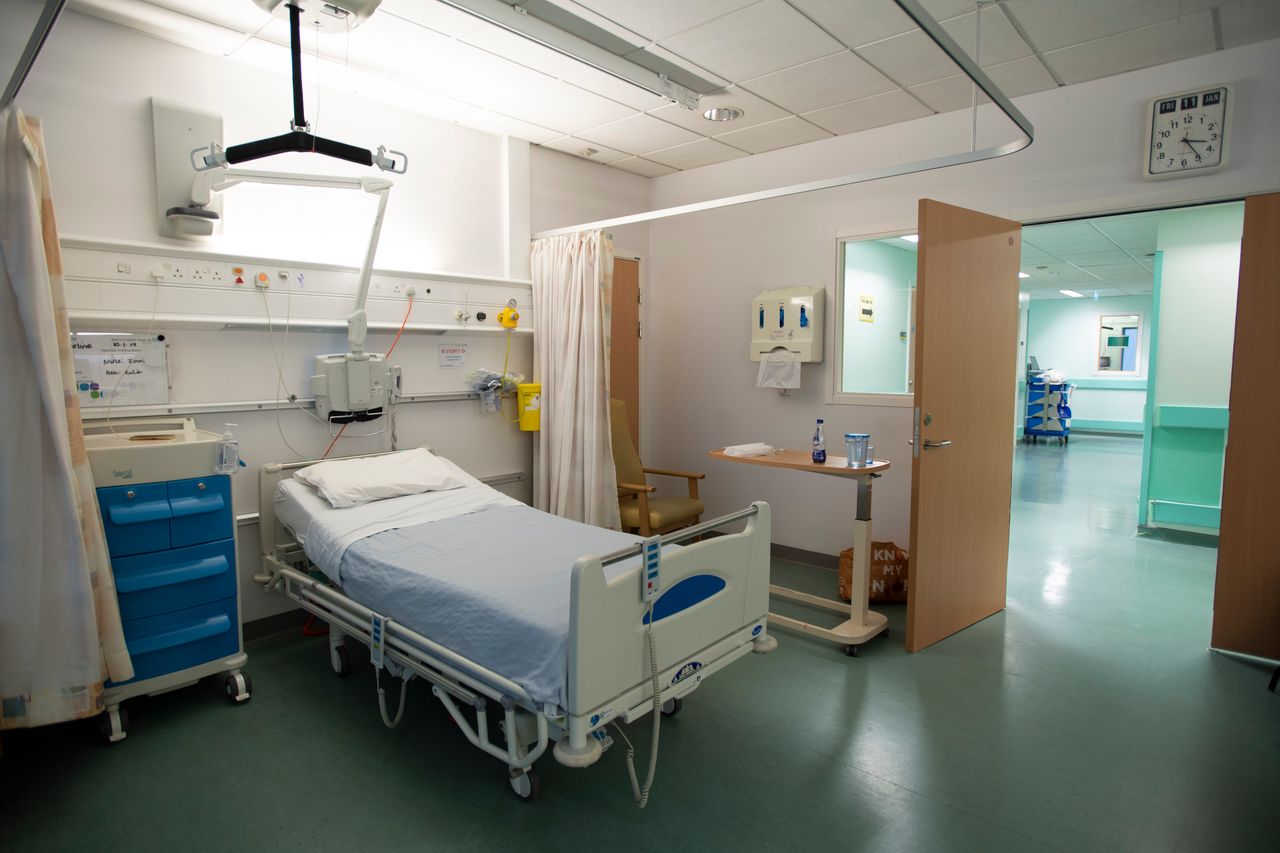
Emily was on the Royal Blackburn’s acute medical unit A, home to bed number 4 – and 41 others.
The ward is something of a piggy-in-the-middle department. If A&E is the frontline of the hospital, this unit is the funnel where urgent cases arrive to be filtered elsewhere. The patients here have often endured lengthy waits, and staff have to find ways to make sure the two main treatment targets are not breached.
The NHS in England works to two main timeframes: the four-hour target designates that at least 95% of patients requiring emergency treatment should be admitted, transferred or discharged within that time. The NHS as a whole has not hit this target since July 2015. The latest figures for February reveal that 84.2% of patients were seen within four hours – the lowest performance on record since it was introduced in 2004. NHS England recently announced new measures which could see it scrapping the target altogether.
The second benchmark is the 12-hour A&E target, and the consequences of a breach are more serious – both for patients and for staff. If it happens, the chief executive of the hospital is informed, and it is escalated to NHS England for a formal investigation.
Emily’s 20-hour wait on a hospital trolley was far too long, by any standards. “The whole care system needs looking at. If you have a car, it’s no use just looking at the brakes if the rest of the engine isn’t working,” she said. “It’s a vicious cycle as they are shutting hospitals and reducing beds while the population is growing and people are getting older and requiring more care.”
“The problem isn’t the four hour target; it’s the lack of beds, staff and hospital capacity to make the target happen”
The targets also rely heavily on other parts of the hospital working smoothly – and this is a problem not only during the winter. Chris Moulton, vice-president of the Royal College of Emergency Medicine, says the term “winter pressures” is a misnomer. “It makes people think it is something that only comes once a year like Christmas – but no one who works in a hospital would agree with that. They are actually all-year-round pressures.”
While targets make life difficult for NHS staff, getting rid of them is a thorny topic, too. When NHS bosses earlier proposed scrapping them, they faced a fierce backlash from doctors, who said it would have a “near-catastrophic impact on patient safety”.
But Moulton says they “don’t remember life before”. He recalls the years before it was introduced, when in his role as a consultant he would leave an A&E shift in the evening, only to return the next morning to find the same patients still there. “The problem isn’t the four hour target; it’s the lack of beds, staff and hospital capacity to make the target happen,” he said.
After spending one night in bed 4 being assessed by doctors and nurses, Emily Coyler was discharged and put back under the care of her neurologist at another hospital. Combined with her time in A&E, she spent two days in hospital and was relieved to return home.
Soon after she left, another patient arrived to claim the coveted bed – this time, a 97-year-old woman with pneumonia whose oxygen levels were dangerously low.
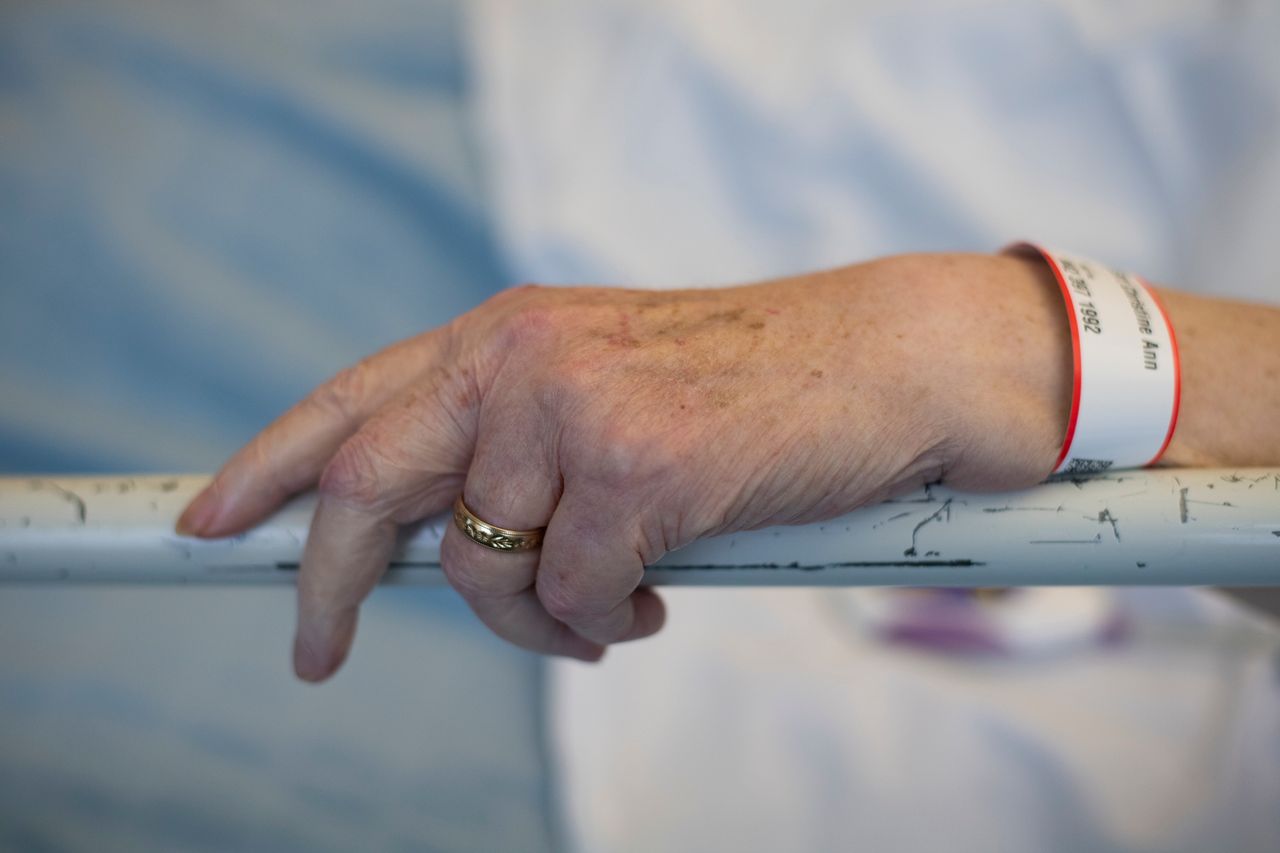
––––––
Bed number 4 had pristine white sheets, a pillow and a curtain for privacy. As its newest inhabitant appeared to be coming to the end of her life, the blinds were drawn around her, and as she struggled, the team moved her to a side-room to protect her dignity.
The 97-year-old woman was one of a number of patients I saw on the ward in need of urgent care due to old age. If there was a consistent theme of the week, this was it.
But it comes as no surprise – in 1949, a year after the establishment of the National Health Service, its founder Aneurin Bevan predicted the pressure of an ageing population. “After the first year of the NHS, one of the chief causes of our troubles is the increasing demand made on our hospitals by the aged sick,” he said.
He was right: whereas in 2016 there were 1.6 million people aged 85 or over, by 2066 the number is projected to rise to more than five million. And A&E departments are already seeing an impact, as the number of people seeking urgent care also rises. In 2017-18 there were 23.8 million attendances in A&Es across England – an increase of a staggering 22% since 2008-09.
After an hour in bed number 4, the 97-year-old woman is moved to a side room. The acute ward wasn’t the right place for her – she needed palliative care to keep her comfortable in her final hours.
––––––
The next arrival was Jacqueline English, 53, a married mum-of-three with two grandchildren. She had taken an overdose the previous evening.
When she explained why she was in bed number 4, her eyes filled up with tears. “When I said I’m a mum-of-three – my son isn’t with us anymore. We lost him a few months ago,” she said.
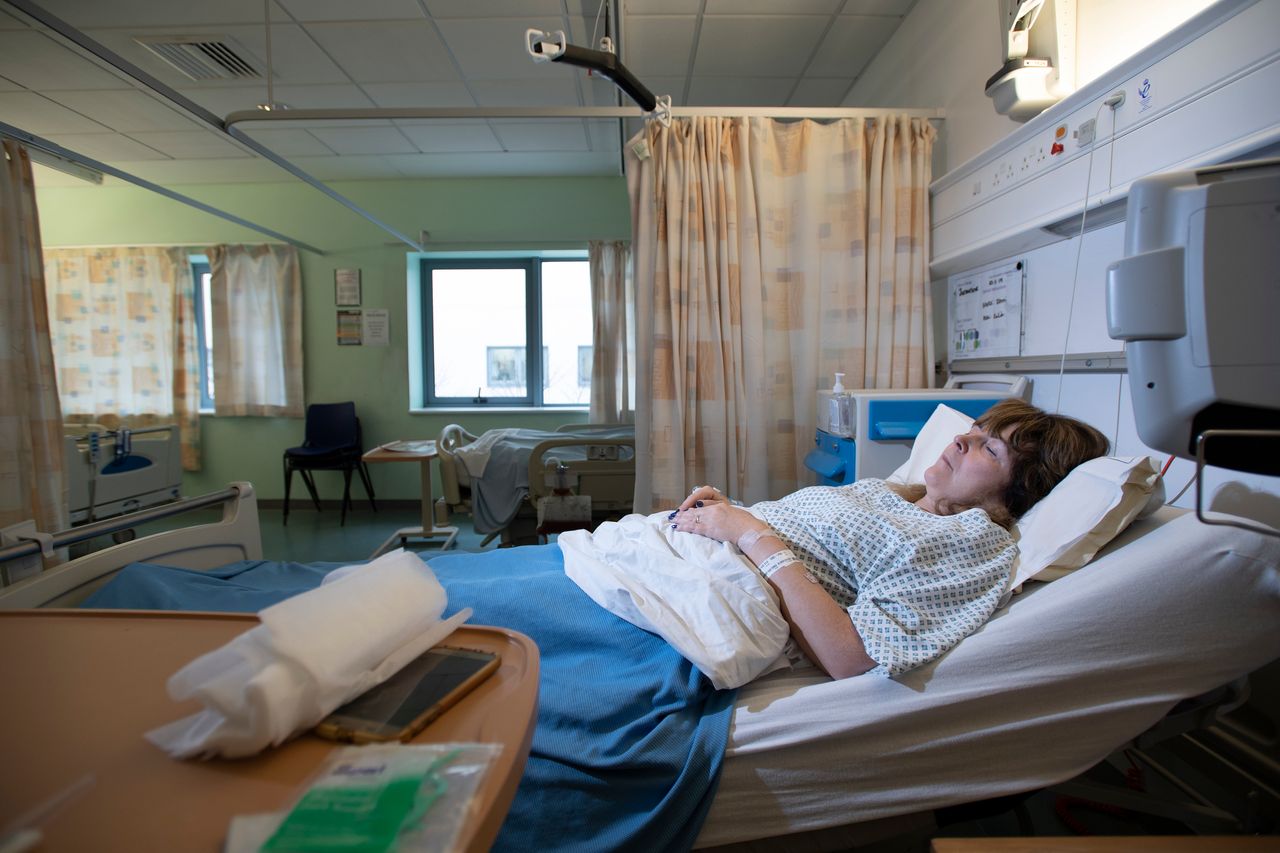
Jacqueline’s 30-year-old son John died suddenly in May last year. “It still hasn’t sunk in that he’s gone. Sometimes I forget and think ‘John will be home soon’ and then it hits me all over again. It’s like a kick in the guts. I question whether I was a fit mother and whether I did something wrong. I hope John knew how much I loved him.”
The acute medical unit admits patients with mental health issues almost daily. Some need treatment; others need observation. Once they’re medically fit, they’re referred to the mental health team. But when it comes to discharging them, things are trickier – many face lengthy waits for a mental health bed somewhere else in the country.
Jacqueline had been suffering from mental health issues for years, and has attempted suicide twice before. “I think unless you’re screaming and shouting, you don’t get help. After losing John, I feel I didn’t get the support I needed. I understand they’re over-stretched and there’s a big demand for services. But because there’s not enough adequate mental health services, it leads to people like me coming into hospital after attempting suicide.”
Ward nurse Yvonne Grogan agreed. “Many of these patients need one-to-one care if they are a risk to themselves,” she said. “Sometimes, it’s difficult to discharge them because of a lack of mental health beds.” This causes blockages, adding strain on a service already bursting at the seams.
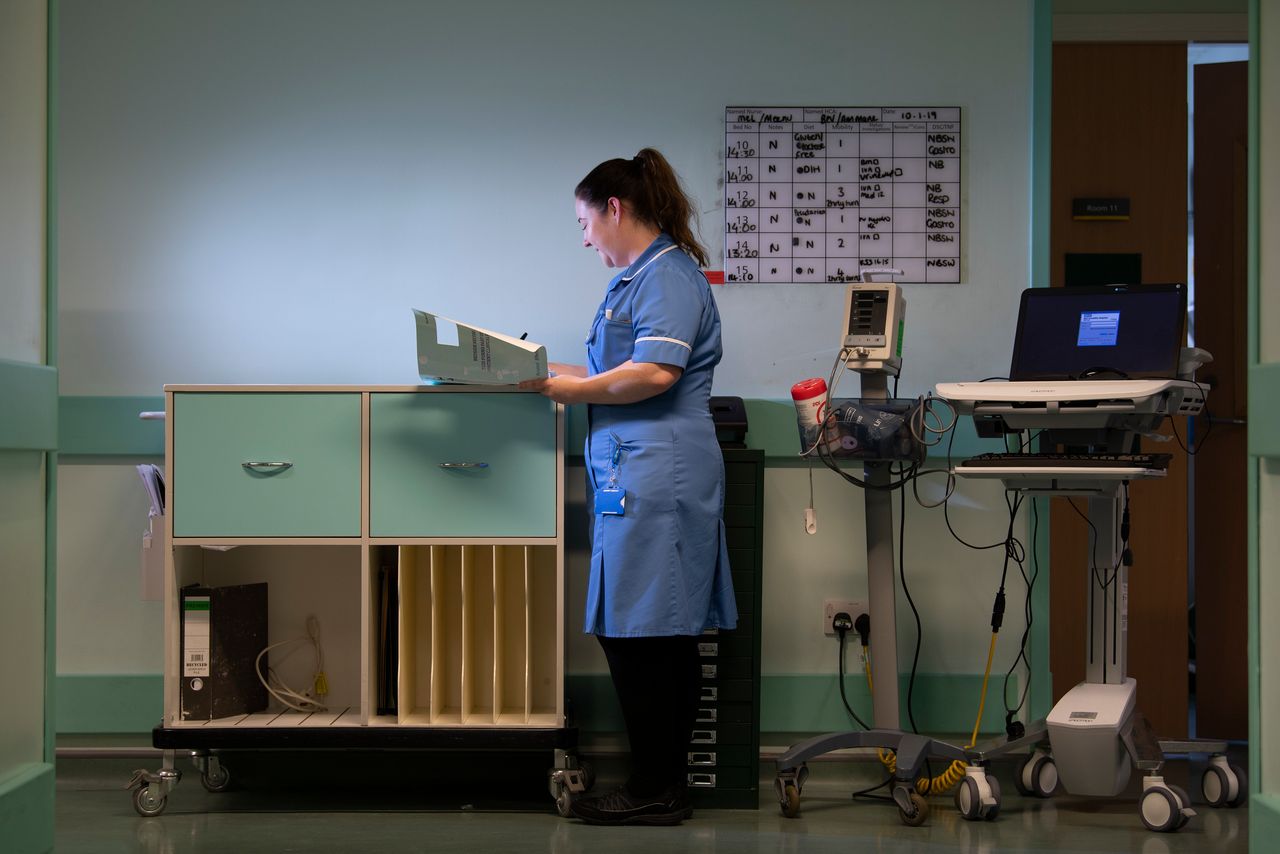
Another nurse on the ward said the longest she’d seen a patient wait for a mental health bed at Royal Blackburn Hospital was 10 days. Chris Moulton of the Royal College of Emergency Medicine said he knew of one patient who had to be transferred to a bed 250 miles away, as it was the only one available in the country. There is an “absolute epidemic of mental illness in the UK,” he said.
Bosses at Royal Blackburn Hospital admitted that all their 12-hour breaches in A&E in recent years have been due to mental health patients.
Jacqueline was given medication and fluids to counteract the effects of the tablets she had taken. A doctor told me that if a patient suffers serious effects from taking an overdose, they need dialysis to get rid of the drugs from their system. The next morning, Jacqueline said she was grateful for the life-saving treatment. “I’m glad I’m still here. I saw my husband and felt awful for putting him through that. We’ve been married for 33 years and he’s so good and kind.”
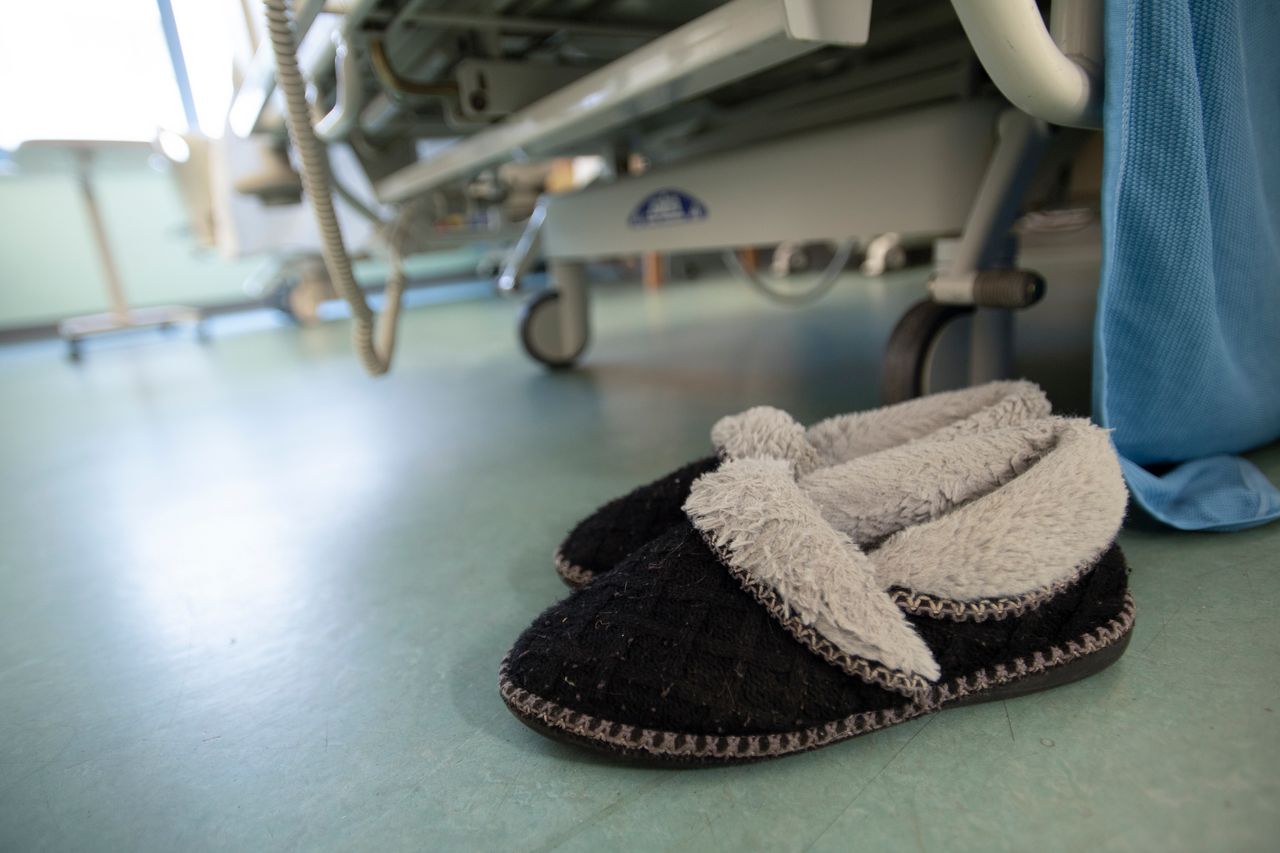
Jacqueline was kept in bed number 4 for another day while she awaited blood test results and a meeting with the mental health team. Around her, the nurse’s station was a hive of activity.
Morning ward rounds were carried out by consultants as they made decisions on whether patients were ready for discharge, or need transferring to one of the hospital’s 17 other wards. Anyone able to leave before 10am is termed a “golden patient”, their departure freeing up vital space for someone else in need. For the nurses, it was clearly a constant balancing act – with safety, effectiveness and time all edging at each other.
NHS beds at East Lancashire Hospitals Trust – in numbers
– Around 3,000 sheets and 1,000 blankets are laundered each day
– A sheet can last up to 200 washes if it is not damaged or stained
– The minimum time needed to launder a sheet is 2.5 hours
– An average of 100,000 pieces are laundered each week at the trust. The machine used can dry, iron and fold 600 sheets an hour, with two trained staff feeding the materials in
Mealtimes break up the monotony of lying in a hospital bed. Handing out food, Chris Townsend made his rounds of the unit. He works as a healthcare assistant, but in the past, the 39-year-old battled alcohol addiction for years. “I was homeless, single and out-of-work. I probably had a wash every two weeks and dressed scruffily. My confidence and self-esteem were on the floor,” he said.
Working in the acute medical unit, Chris, who has now been alcohol-free for eight years, said he often sees patients admitted with addiction issues. “We get drug overdoses and people who are detoxing and are confused and hallucinating. I don’t preach but I tell some patients a bit about my own story – just enough to plant the seed that recovery is achievable.”
After nearly two days in bed number 4, Jacqueline was finally deemed safe for discharge. She was picked up by her husband, and returned home to her family.
––––––
Attached to an oxygen pump, Pam Willan arrived in bed number 4 struggling for breath. A 72-year-old mother-of-three, she was suffering from emphysema and chronic obstructive pulmonary disorder, which means she relies on oxygen 16 hours a day. She was admitted to hospital by ambulance after suffering a flare-up of breathlessness. “I had always been well up until my sudden diagnosis a couple of years ago, so it was a bolt from the blue,” she said as she assumed her place in bed number 4.

With oxygen and medication, Pam is mostly able to cope with her condition, but cold weather often causes her problems. “Even though I am getting older, in my mind, I still feel the same as I did when I was 22,” she said. “It is very hard when your body lets you down. But you can’t do anything about it so just have to get on with it.”
Although demand for elderly care has grown, the number of hospital beds has reduced drastically. Chris Moulton said the NHS has lost 15,000 beds in the last seven years – 10% of all acute beds. “We have less acute hospital beds than almost any other developed nation. When we say there’s a shortage of beds, it’s not just actual beds – we need the staff to go with those beds.”
“When I hear of patients waiting for hours in A&E in corridors, I feel immensely sad”
- Mohamed Freeth
Mohamed Freeth, 46, a consultant physician in the acute medical unit said the real issue is about trying to stop people coming to hospital in the first place. “There needs to be more on the community level and an admission avoidance team to reduce the need for patients to come to hospital,” he said.
Freeth, who came to the UK from Sri Lanka nine years ago, added: “When I hear of patients waiting for hours in A&E in corridors, I feel immensely sad as I know it must be a very unpleasant experience. There is definitely a better way.”
As she left bed 4 to be admitted onto a respiratory ward, Pam told me how fiercely defensive she is of the NHS. “I don’t know how they cope under so much pressure and they do a damn good job despite it. The NHS is absolutely wonderful. Nowhere else would you get looked after like this without paying upfront. I know we all pay through National Insurance but when you’re poorly, the NHS is priceless.”
––––––

On his arms, Robert Sharp has two prominent tattoos – one to his beloved football team Blackburn Rovers, and a tribute to his dad who died a few months ago. Robert works for the bed-making team, and as soon as a bed is vacated he and his colleague, Mohammed Patel, clean it with lightning speed.
“It’s very important to clean the bed thoroughly because of the risk of infection and hygiene,” he explained. ”We lift the bed, strip it, check underneath it, make sure the wiring isn’t faulty and wash the table, chairs and drawers and do the bed last so there’s no cross infection.”
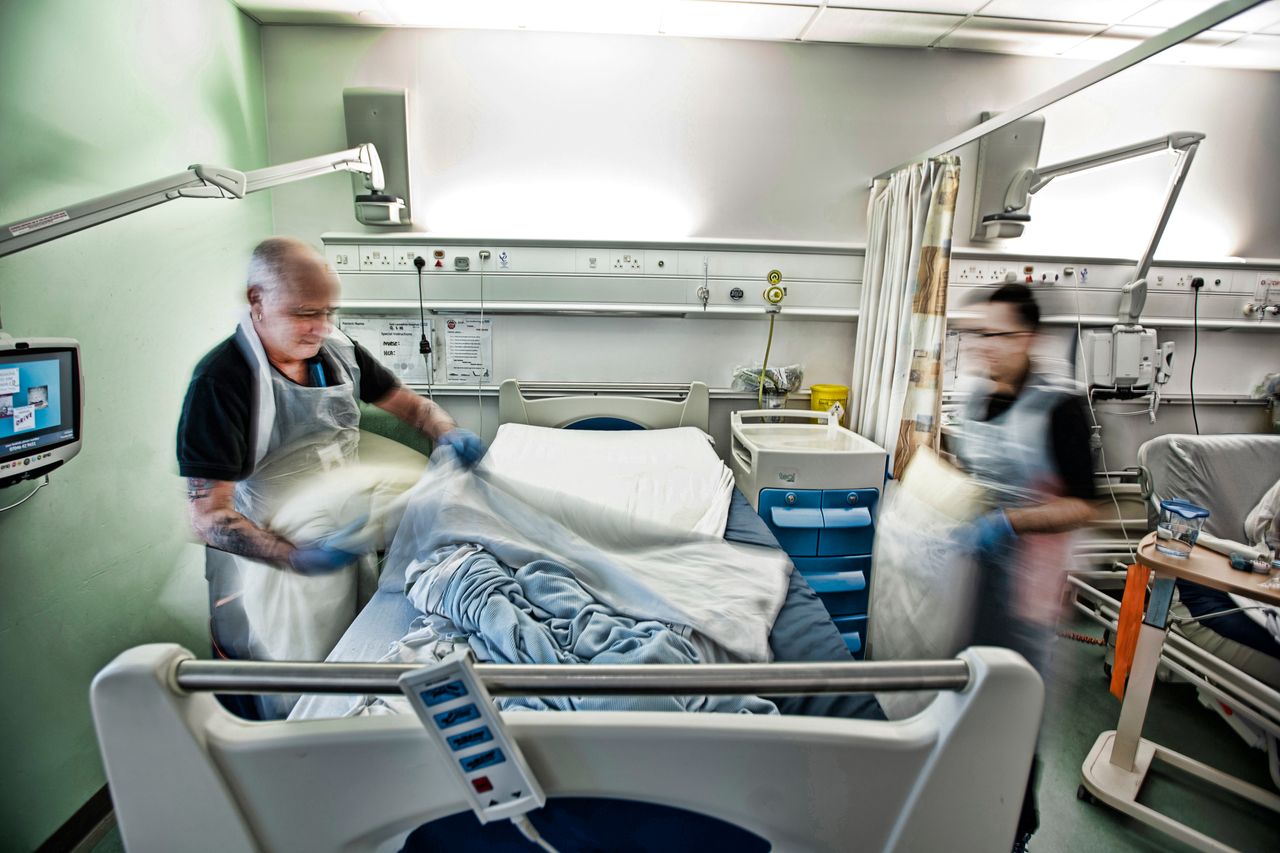

Robert added: “I love to have a bit of fun with patients and get them talking and laughing. Humour is very important and I’m a firm believer in laughter being the best medicine. But you do see some sad stories. My dad was in hospital and died a few months ago and seeing some of the patients brings all that sadness back. However, it’s lovely when you see people come in poorly and then make a wonderful recovery.”
––––––
After a brief vacancy, the final occupant of bed number 4 that I observed – a patient with dementia and a reduced level of consciousness – arrived. She needed to be seen by a senior doctor, before she could be admitted to a ward elsewhere in the hospital.
Late into the night, the brief hubbub of visiting hours had calmed, and a vague stillness had descended over the ward – but the sounds of machines continued, their beeping and observations carrying on every four hours through the night.
––––––
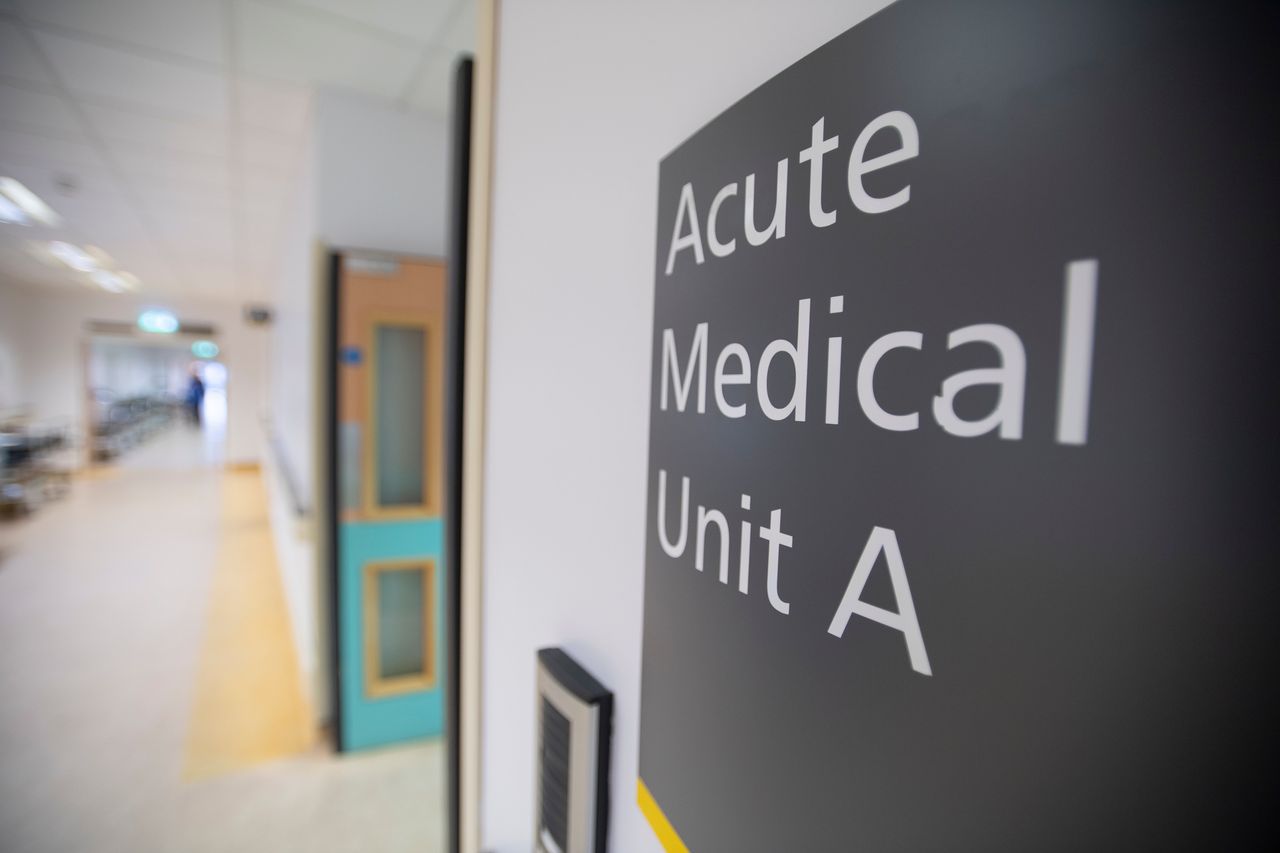
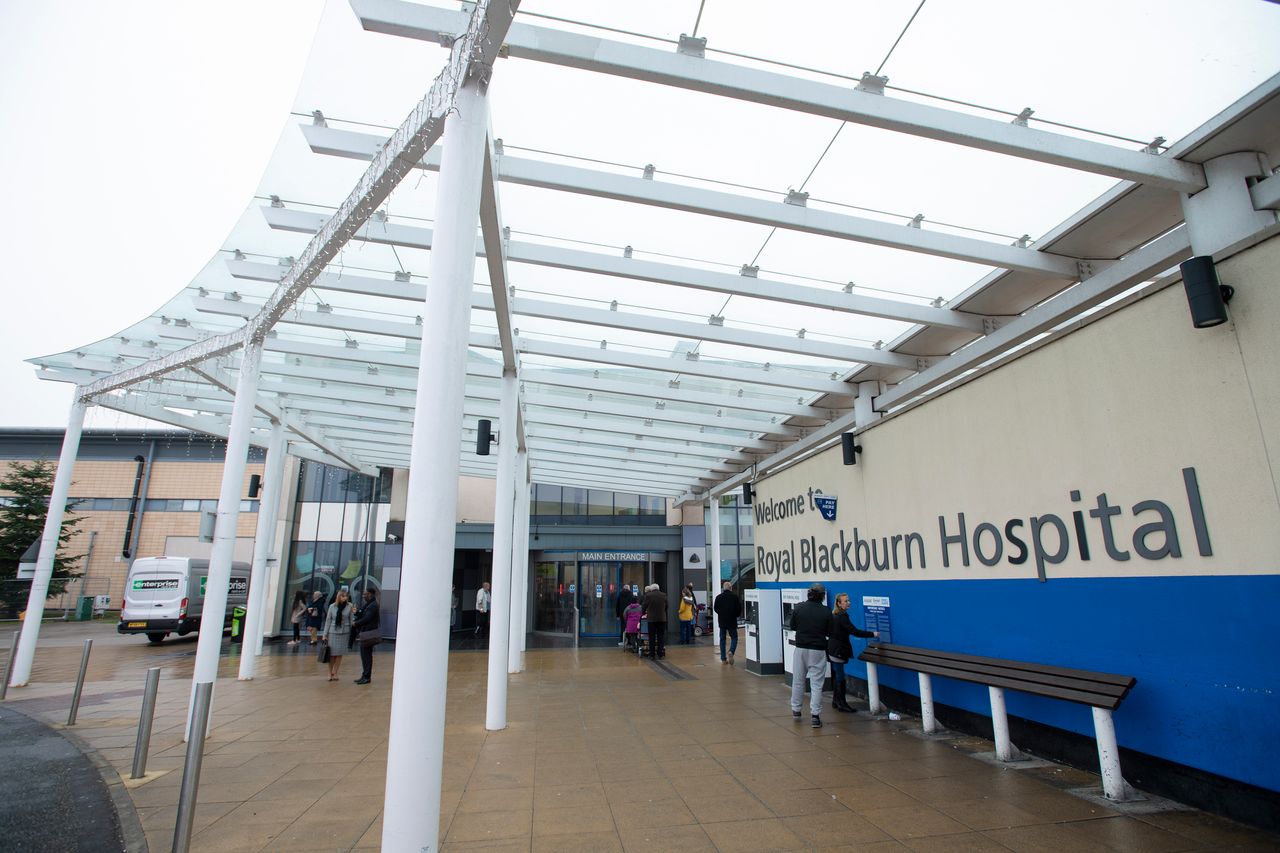
Bed Number 4 – the bigger picture
Jonathan Ashworth MP, Labour’s shadow health and social care secretary, said the stories captured in HuffPost UK’s reporting are a “heartbreaking and devastating indictment of nine years of deliberate underfunding, wider cuts and mismanagement by the Tory government”.
Ashworth said Emily Colyer’s case in particular was “disgraceful”, and yet “happens all too often across our over-stretched NHS”.
“We simply can’t go on like this. Our NHS is crying out for a fully funded, fully staffed rescue package and Theresa May has failed to offer that.”
And across the medical profession, senior figures in emergency medicine and in the NHS said the stories revealed the intense – and potentially unsustainable – pressures facing staff today.
Simon Walsh, emergency medicine specialist lead at the British Medical Association, said the daily reality captured in this report will be familiar to NHS staff across the country. “It is an NHS which is barely keeping up with patient demand with overcrowding in emergency departments and trying to move patients into beds within the rest of the hospital.”
Walsh added that experts recommend hospitals should run at 85% occupancy to ensure beds are available for emergencies – but figures for the first three weeks of January show bed occupancy at 95% in NHS hospitals across the UK.
“It is no surprise that staff who are working flat-out on the frontline are finding it extremely stressful working in these conditions where they are being asked to achieve the impossible.
“The government needs to take this seriously and address it as people cannot work under unbearable pressure indefinitely.”
Niall Dickson, chief executive of the NHS Confederation, said: “The reality is that staff are being pushed to the limit and in many places, the NHS is showing signs of immense strain.
“We are concerned pressure on frontline services is starting to ramp up – more ambulances are being delayed, more A&E departments are having to divert patients to other hospitals and bed occupancy at some trusts is at unsafe levels.
“The NHS is keeping its head above the water but this isn’t a sustainable way of running a health system.”